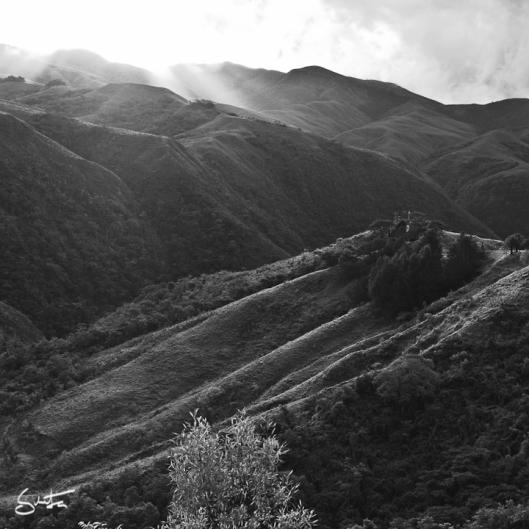Podczas naszej ostatniej wizyty w zoo doszliśmy do wniosku, iż placówka ta z roku na rok, z miesiąca na miesiąc ma się coraz gorzej. Dlaczego? Cóż, sytuacja zwierząt może nie uległa zmianie (poprawie) – większość z nich wciąż przebywa w małych klatkach, ale cały teren zoo wydaje się być placem budowy, tylko nie wiadomo co się buduje. Już nie chodzi tylko o dziury w chodnikach, ale także gruz i metalowe pręty ułożone lub porzucone wzdłuż ścieżek i przy placach zabaw. Widać tez nowe inwestycje, jak budynek akwarium, jednakże tak szybko jak się tam wejdzie, chce się z niego uciec – a wszystko to za sprawa braku wentylacji oraz kontroli ilości zwiedzających ten malutki przybytek.
During our last visit to the zoo we came to the conclusion, that Santa Cruz’s facility from year to year gets only worse. Why? Well, the situation of animals hasn’t changed (improved) – most of them still live in small cages, but the whole area of the zoo seems to be like a building site, only no one knows what is being built. It’s not just about holes in the pavement, but also debris and metal rods stacked or abandoned along the paths and playgrounds. There is a new investment, the building of an aquarium, however as soon as you go in you want to go out – all this for the lack of ventilation and control over the amount of visitors storming this tiny place.
Przeczytałam ostatnio, ze zoo miejskie zmaga się z brakiem funduszy na renowacje, a opłaty za wstęp ledwo pokrywają zakup pożywienia dla zwierząt. Może to i prawda, ale dlaczego wiec nie podniesie się cen, które od lat są takie same? Śmiesznie niskie, nawet na boliwijskie standardy – 10 bs. dorośli, 5 bs. dzieci. Zdumiewa mnie to tym bardziej, ze w końcu zoo mieści się w najbogatszym Miście w Boliwii, gdzie 10 Bs. starcza na duża wodę mineralna lub butelkę Coca-Coli. Z cala pewnością ludzi byłoby stać na bilety za 20 – 30 Bs., a ‘odnowione’ i zadbane zoo przyciągnęło by jeszcze więcej zwiedzających.
I read recently that the city zoo is struggling with a lack of funds for renovations, and that the admission fee barely covers the purchase of food for the animals. Maybe it’s true, but then I ask why don’t they rise the price of the tickets, which have been the same over the years? Ridiculously low, even for Bolivian standards – 10 Bs. adults , 5 bs. children. It amazes me even more, as the zoo is located in the richest city of Bolivia, where 10 Bs. buys you a bottle of Coca -Cola. Certainly, people here could afford a ticket for 20 Bs., and a ‘refurbished’ and neat zoo would have attracted even more visitors.
Z poprawy warunków bytowania z cala pewnością ucieszyłyby się miedzy innymi ‘wielkie koty’, z których większość upchana jest dziś na malutkich cementowych wybiegach, odgrodzonych od drogi szybkiego ruchu jedynie metalowa siatka. Zestresowane krążą w te i we wte, wokół swoich klitek.
The improvement of living conditions for sure would also have made happy the ‘big cats’, today crammed in tiny cemented cages, fenced off from the highway only by metal net. Stressed, they circulate all the time around their enclosures.
Tylko dla jednego z jaguarów przygotowano większy, porośnięty trawa, i odgrodzony od widzów fosa, wybieg. Daje on możliwość obserwowania tego majestatycznego zwierzęcia, z zachowaniem wszelkiej ostrożności, a jaguarowi zapewnia minimum kontaktu z rozwrzeszczanym tłumem oraz prywatności. Przyznam, jest to jedno z moich ulubionych miejsc w zoo, właśnie z uwagi na wyżej wymienione punkty. Kolejnym plusem jest zaś możliwość fotografowania tego pięknego stworzenia.
Poniżej przedstawiam garść zdjęć z naszej ostatniej wyprawy do zoo oraz kilka faktów o tym jednym z największych kotów na świecie.
Only one of the jaguars ‘enjoys’ larger run, covered with grass and separated from the spectators with the moat, which gives a great opportunity to observe this majestic animal, with all precautions. It also provides the jaguar with a minimum contact with a crying crowd and some privacy. I admit, this is one of my favorite places in the zoo, just because of the reasons mentioned above. Another advantage of that setting is the possibility of photographing this beautiful creature without any obstacles.
Therefore, above I present a handful of photos from our last trip to the zoo and below few facts about one of the biggest cats in the world.

Jaguar jest jedynym przedstawicielem rodzaju Panthera żyjącym w Nowym Świecie. DNA wskazuje, że jaguar, lew, tygrys, lampart, irbis i pantera mglista dzielą wspólnego przodka sprzed 6 do 10 milionów lat.
Jaguar is the only representative of the genus ‘Panthera’ in the New World. DNA evidence shows that lion, tiger, leopard, jaguar, snow leopard and clouded leopard share a common ancestor, and that this group is between six and ten million years old.
Chociaż ten cętkowany kot fizycznie najbardziej przypomina lamparta, zazwyczaj jest większy i ma mocniejszą budowę, natomiast jego zachowanie upodabnia go bardziej do tygrysa. Preferuje on gesty las deszczowy, ale zamieszkuje także inne siedliska – otwarte jak i porosłe drzewami. Jest silnie związany z obecnością wody i, podobnie jak tygrys, uwielbia pływać.
This spotted cat physically most closely resembles the leopard, although it is usually larger and sturdier, and its behavioral and habitat characteristics are closer to those of the tiger. Jaguar prefers rainforest, but also settles in the variety of forested and open terrains. It is strongly associated with the presence of water and similar to tiger, jaguar enjoys swimming.
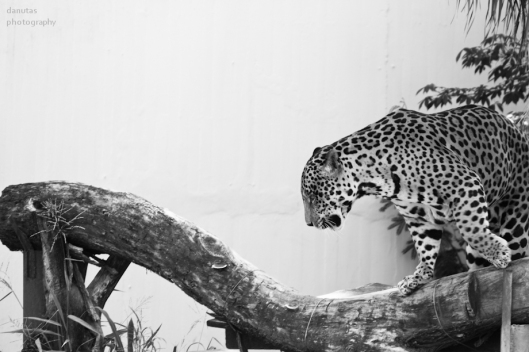
Słowo „jaguar” pojawiło się w jeżyku angielskim dzięki amazońskim językom tupi-guarani, gdzie słowo yaguara oznacza bestie, czasami zaś tłumaczy się je jako „pies”.
The word “jaguar” appeared in the English language through Amazon Tupi – Guarani language, where the word yaguara means “beast”, sometimes being translated as “dog”.
Gatunek cechuje zmienność ubarwienia. Regularnie spotyka się okazy Melani styczne, jednak choć jaguar taki wydaje się zupełnie czarny, z bliska można dojrzeć jego cętki. Czarnego jaguara nazywa się potocznie ‘czarna pantera’. Albinosy są ekstremalnie rzadkie.
Color morphism occurs in the species quite often. Jaguars with melanism (6%) appear entirely black, although their spots are still visible on close examination. They are informally known as black panthers. Albinos are extremely rare.
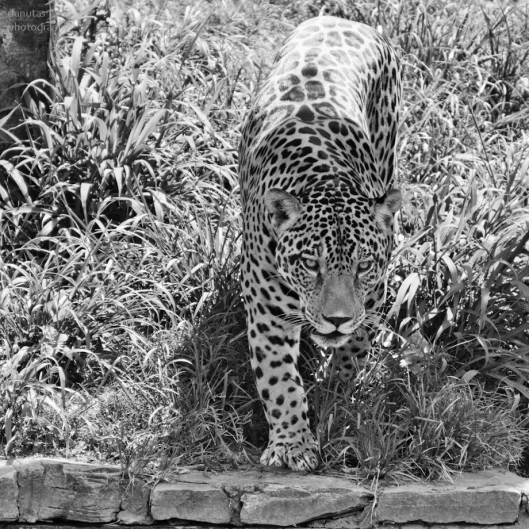
Typowa długość zżycia jaguara na wolności szacowana jest na 12 do 15 lat, ale w niewoli dożywa on 23 lat.
The typical life expectancy of a jaguar in the wild is estimated between 12 and 15 years, but in captivity jaguar can live up to 23 years.

Jak większość kotowatych, jaguar zżyje samotnie, i jak inne wielkie koty, potrafi ryczeć (ryk jaguara podobno przywodzi na myśl powtarzające się kaszlnięcia). Zwierzę potrafi tez miauczeć i mruczeć.
Like most felines, the jaguar lives alone, and as the other big cats is able to roar (which often resembles a repetitive cough). It may also vocalize mews and grunts.
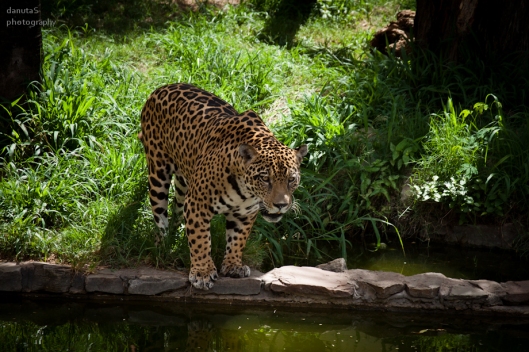
W prekolumbijskiej Ameryce Środkowej i Południowej jaguar stanowił symbol siły i mocy. Pośród kultur andyjskich kult jaguara rozszerzył się dzięki wczesnej kulturze Chavín (słowo chavin w lokalnych dialektach oznacza właśnie jaguara). W Boliwii kult jaguara (i pumy: kota andyjskiego?) ‘zapisany’ został na antycznej ceramice, malowidłach i rytach naskalnych przez kultury takie jak Huari, Tiwanaku, Chane (El Fuerte of Samaipata) i Inka.
In pre-Columbian Central and South America, jaguar was a symbol of strength and power. Among the Andean region, a jaguar cult expanded through the early Chavín culture (‘Chavin’ in local dialect means jaguar). In Bolivia, a jaguar (and puma) cult is visible on ancient ceramics, paintings and rock carvings by cultures of Huari, Tiwanaku, Chane (—>El Fuerte of Samaipata) and Inkas.
Inkowie uważali jaguara (pumę) za swoje „święte zwierzę” wraz z wężem i kondorem. Waz symbolizował świat podziemia, puma świat ludzi, a kondor – ptak żywiący się padlina – był strażnikiem miejsc świętych oraz ludzi umarłych. Waz był pierwszym etapem człowieka, silą napędową, która idzie wzdłuż kręgosłupa. Puma z kolei uczyła stabilności, praktyki duchowej i doprowadzała do najwyższego szczebla – kondora, będącego uosobieniem boskości, licznikiem miedzy światem bogów i ludzi.
The Incas considered jaguar (puma) their “sacred animal” together with the snake and condor. Snake symbolized the underground world, puma world of people, and condor – bird feeding on carrion – a guardian of the sacred places and dead people. Snake was the first stage of human driving force, which goes along the spine. Puma, taught stability, spiritual practice, and drove to the tallest level – the bird. Condor was the personification of the divine, a connection between the world of gods and men.
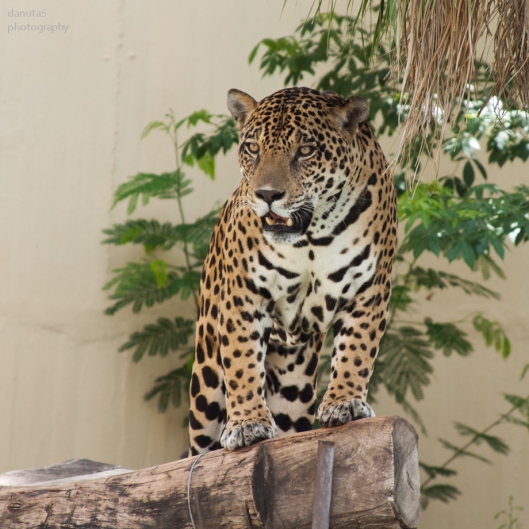
Niestety w ostatnich latach populacja jaguarów drastycznie zmniejsza swa liczebność, a International Union for Conservation of Nature and Natural Resources przyznał mu status gatunku bliskiego zagrożenia. Największe ryzyko dla jaguarów stanowią wylesianie ich siedlisk, wzrastająca konkurencja o pokarm ze strony ludzkiej, kłusownictwo oraz zachowania ranczerów, którzy często zabijają duże koty polujące na zwierzęta hodowlane.
Jaguar populations are rapidly declining. The animal is considered Near Threatened by the International Union for Conservation of Nature and Natural Resources, meaning it may be threatened with extinction in the near future. The major risks to the jaguar include deforestation across its habitat, increasing competition for food with people, poaching and the behavior of ranchers who will often kill the cat where it preys on livestock.
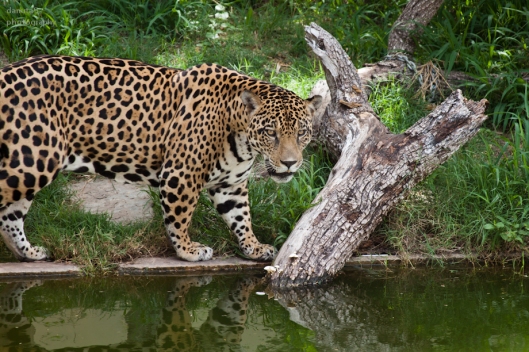
Międzynarodowy handel jaguarem bądź częściami jego ciała został zakazany. Wszelakie polowania na te zwierzęta są zabronione w Argentynie, Belize, Kolumbii, Gujanie Francuskiej, Hondurasie, Nikaragui, Panamie, Paragwaju, Urugwaju, Wenezueli, Surinamie i Stanach Zjednoczonych, gdzie obejmuje go ‘Endangered Species Act‘. Gatunkowi nie przysługuje jednak ochrona prawna w Ekwadorze i Gujanie, a polowania na osobniki wywołujące problemy dopuszczone są w Brazylii, Kostaryce, Gwatemali, Meksyku i Peru.
Niestety, w Boliwii dozwolone jest wciąż myślistwo rekreacyjne…
Any international trade in jaguars or their parts is prohibited. Hunting of jaguars is prohibited in Argentina, Belize, Colombia, French Guiana, Honduras, Nicaragua, Panama, Paraguay, Suriname, the United States (where it is listed as endangered under the Endangered Species Act), Uruguay and Venezuela. The species has no legal protection in Ecuador or Guyana. Hunting of jaguars is restricted to “problem animals” in Brazil, Costa Rica, Guatemala, Mexico and Peru.
Trophy hunting is still permitted in Bolivia…
Źródła/ Sources: Wikipedia, Cocha Banner Magazine, miktravel.com.
Zdjecia/ Photos: ZOOLOGICO MUNICIPAL FAUNA SUDAMERICANA Santa Cruz de la Sierra ——> (Zoo w Santa Cruz de la Sierra, Nandu, Z wizyta u wyjca amazonskiego, Z wizyta w Nowym Jorku).
Zapraszam również do odwiedzenia galerii fotografa, biologa i konserwatora przyrody Steffena Reichle, mieszkającego w Boliwii, któremu już kilkakrotnie udało się sfotografować jaguary na wolności, w ich naturalnym środowisku —-> Steffen Reichle Photography.
I invite you also to visit the gallery of photographer, biologist and nature conservation specialist Steffen Reichle based in Bolivia, who repeatedly managed to ‘capture’ the jaguar (and other wild animals) in its natural environment —-> Steffen Reichle Photography. Where they really should be.
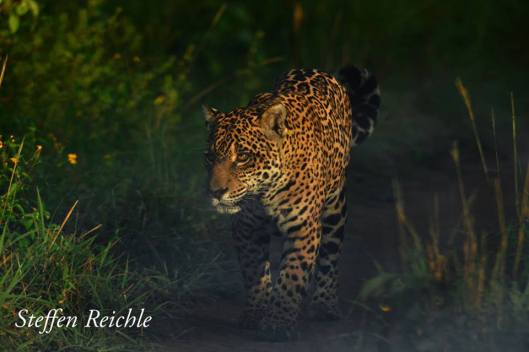
-17.866667-63







































